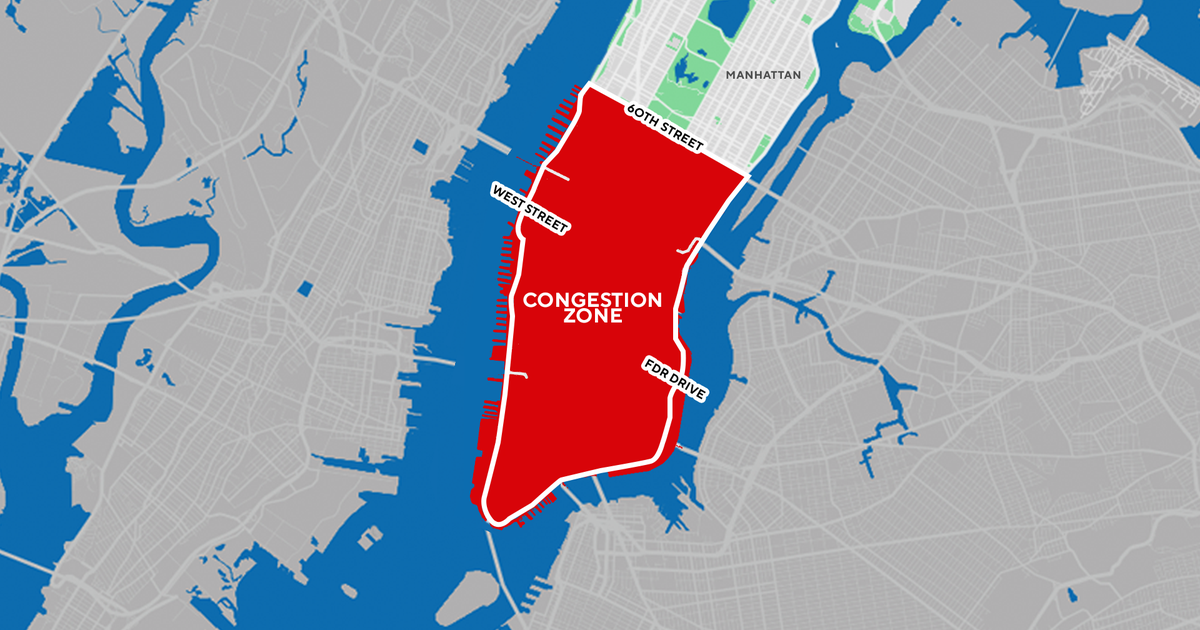JFK Runway Closure Could Jam Up New York Skies This Summer, Experts Warn
NEW YORK (CBSNewYork/AP) -- A runway at John F. Kennedy International Airport will soon close for about five months, causing a potential traffic jam in the skies above New York City this summer.
The main arrivals runway at JFK will be closed for repairs and resurfacing just as the summer travel season gets underway, and will likely remain closed through most of hurricane season.
As WCBS 880's Jim Smith reported, airline industry analyst Robert Mann of Port Washington said the runway shutdown has to be a finely tuned operation.
"It's a very compact and complex air space with a lot of activity," Mann said.
JFK Runway Closure Could Jam Up New York Skies This Summer, Experts Warn
When the winds are calm and visibility is clear, the closure of one runway doesn't cause major disruptions at JFK, which has four runways and rarely operates all four at the same time. But during inclement weather, the loss of that runway could cause a ripple effect of delays at all three of the major airports in the crowded skies above the city and the Tri-State Area.
"When one airport needs to change runway direction, it may dictate a change in the runway orientations or runway use at other airports," Mann said.
Runway selection is driven by weather and wind. Pilots prefer to land and take off into the wind to create either lift or drag on a plane. Because of this, airport officials are assessing wind direction all day long. When the wind changes, they will redirect planes to a different runway.
With the main arrivals runway out of commission, the Federal Aviation Administration could be forced to land planes on runway 13L, an interior runway that runs parallel to Jamaica Bay. And in poor visibility, landing aircraft on this runway creates a logistical mess for the FAA, officials say.
In bad weather conditions and poor visibility, pilots generally have to land using a specific flight path that relies on instrument technology. A series of beacons will send signals to the cockpit to ensure that the plane is properly centered with the runway and descending at the correct angle.
The problem with runway 13L is that its instrument-landing flight path into LaGuardia uses part of the airspace above Teterboro to line up aircraft for final landing. In turn, that pushes Teterboro into Newark's air space, forcing those two airports to take turns letting planes take off and land.
To help mitigate the delays, the FAA has created a temporary new arrival flight path that can be used by planes that have GPS technology on board. That path doesn't use any airspace above Teterboro, thus avoiding the logjam effect. But most domestic airplanes do not have GPS technology, though all planes are mandated to install it by 2020.
The technology is mostly relegated to new aircraft or the jumbo jets that make long hauls overseas.
The good news is that once this runway project is completed, the final product will be longer, wider and safer, allowing it to handle giant international planes. It will be completely resurfaced with concrete, and the electrical and lighting systems will be replaced, said Ron Marisco, a spokesman for the Port Authority of New York and New Jersey, which operates the airport. The longer length will provide a bigger safety zones for planes that overshoot the runway while landing, meeting a new FAA safety mandate.
But that's not much consolation for this summer's travelers.
``When things get very congested, they may invoke ground stops at flight origins for flights destined to the New York airports just because they know they're not going to be able to handle them until later,'' Mann said. ``So when you're sitting in Dallas and you're ground-stopped for your flight to LaGuardia, it may be due to weather. It may be due to the congestion. Or it may be due to a change that was made at Kennedy.''
(TM and © Copyright 2015 CBS Radio Inc. and its relevant subsidiaries. CBS RADIO and EYE Logo TM and Copyright 2015 CBS Broadcasting Inc. Used under license. All Rights Reserved. This material may not be published, broadcast, rewritten, or redistributed. The Associated Press contributed to this report.)



